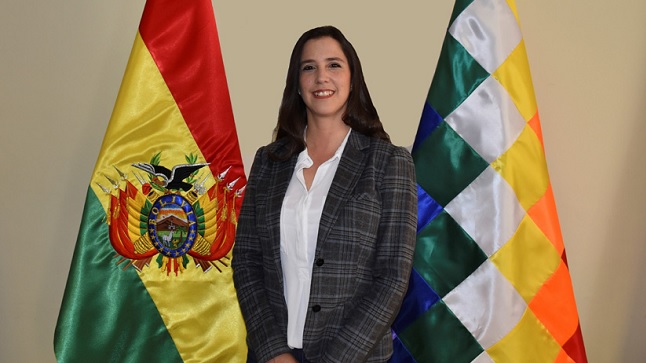
Nuclear Technologies to Change Life in Bolivia
back to contentsHow did the collaboration between ABEN and Rosatom begin?
Bolivia began adopting nuclear technology as part of its development vision in about late 2013 – early 2014 as the then authorities set out initial guidelines of the Bolivian nuclear program, and it was within that context we identified the need for what would be a center for nuclear technology research and development and health-related applications of nuclear technology.
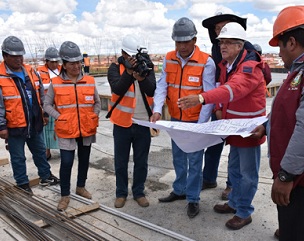 At the end of 2014, a Russian delegation from Rosatom arrived in Bolivia. We had a meeting at the Foreign Ministry, and they presented a proposal for the nuclear research and development center – that was our first interaction. I remember it seemed to be a very special, very interesting idea.
At the end of 2014, a Russian delegation from Rosatom arrived in Bolivia. We had a meeting at the Foreign Ministry, and they presented a proposal for the nuclear research and development center – that was our first interaction. I remember it seemed to be a very special, very interesting idea.
The following year, 2015, our dialogue grew more dynamic and gained momentum, and the idea of building a research center incorporating many different types of radiological and nuclear facilities took shape.
In March 2015, a second delegation visited Bolivia to develop a proposal of cooperation that would meet the country’s needs in the nuclear field.
In October 2015, a top-level Bolivian delegation traveled to Russia, and I was part of that delegation as Vice-Minister of Electricity, which at that time was in charge of the Bolivian nuclear program. The delegation was made up of vice-ministers from the hydrocarbon industry and the then Minister of Hydrocarbons and Energies, Luis Alberto Sanchez.
It was on that very occasion that Rosatom and the Ministry of Hydrocarbons and Energies signed a memorandum of understanding, which led to a well-coordinated work between the both parties in November-February and resulted in the signing of two major bilateral agreements on March 6, 2015. The first one provided for cooperation in peaceful uses of nuclear energy, and the other for the construction of a center for nuclear technology research and development (CNTRD).
What has this cooperation changed in the Bolivian nuclear sector and the country in general?
The partnership between our countries is a huge breakthrough for Bolivia because we are adopting a technology that our neighboring countries have already been using for several decades. We can now say that we are closing a historical gap in the use of nuclear technology as a mechanism of development across different social and economic fields.
How do you think Bolivia’s status will change in Latin America and internationally after it joins the club of countries possessing nuclear technology?
We should not forget about the delay Bolivia had in joining this nuclear club. And I would like to emphasize at this point that thanks to the decision made by former President Evo Morales Aima in 2013 and the Russian-Bolivian cooperation agreement that we now have a more advanced, more sophisticated technology than some countries in the region have had for the last 30, 40 or 50 years.
It is also important to note that we will have the world’s first nuclear facility situated at an altitude of over 4,000 meters above the sea level. This might seem to be a minor detail, but I do believe that technologically this gives added value to the CNTRD.
Nuclear technology is very versatile and can be applied widely in many areas, so I see it being very beneficial to us. We believe that the fact of having a technologically advanced center for nuclear research also puts us in the limelight of the scientific community’s interest. We will be able to conduct scientific and technological research.
In a country that is strongly involved in mining, in a country that is agriculturally rich, in a country that needs technology in healthcare, in a country that needs to solve social and economic issues, the adoption of nuclear technology becomes particularly important.
Among other things, nuclear technology will contribute extensively to an increase in agricultural exports. At present, we are not capable of exporting even 3 apples because we do not have pest controls that other countries do.
Another important thing is that the project is closely monitored by different countries across the region and also, of course, by the International Atomic Energy Agency (IAEA), which has been following the progress of the project from its initial stage and is totally open to cooperation with us.
Furthermore, we are establishing contacts and partnerships in other areas we have never had before. For example, we already have an agreement with the Peruvian Institute of Nuclear Energy (IPEN); we have had meetings with representatives of the Brazilian nuclear industry; Argentina has been collaborating with us since 2014.
How is the CNTRD project in El Alto shaping the lives of the local population?
In 2015, one of the major issues we were discussing was the location of the CNTRD. This was a politically driven matter. Many provinces, including Potosí, Oruro and Santa Cruz, were interested in hosting the CNTRD. Eventually, however, it was the authorities of El Alto who succeeded in getting this important project built in their city.
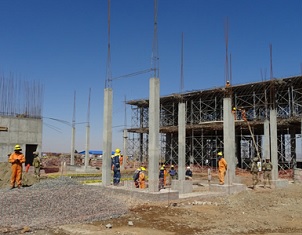 Obviously, they understood that it was a very important matter and that, of course, a project of such significance was going to bring multiple benefits.
Obviously, they understood that it was a very important matter and that, of course, a project of such significance was going to bring multiple benefits.
As of today, people living in the area where the CNTRD is being built already have sewerage they have not had before, fiber-optic cables they have not had until now, and a new avenue that has been financed with ABEN’s resources and crosses more than 40 zones of the surrounding area.
In fact, it has brought fundamental changes even to public safety because there is now public street lighting. The armed forces and the police will be interacting with us for the safety of the facility, and this will also bring more order and security to this neighborhood.
I can also tell you that the price of land in the CNTRD construction area has more than doubled. The project is changing people’s lives dramatically.
What do you think about the changes this project will bring in the future, in the short and long term?
The project is being developed in stages. We expect to have a cyclotron-based radiopharmacy and preclinical facility first and then a multipurpose irradiation facility. We are currently working on potential applications of these facilities to take full advantage of their operation.
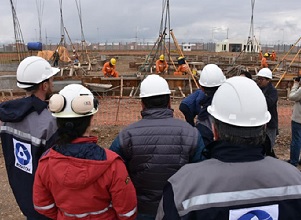 We believe that the cyclotron-based radiopharmacy and preclinical facility will make us self-sufficient in the production of radiopharmaceuticals. Bolivia currently has to import all of the radiopharmaceuticals it needs; there is no opportunity to produce anything. The construction of the CNTRD is an important technological milestone to improve the Bolivians’ quality of life.
We believe that the cyclotron-based radiopharmacy and preclinical facility will make us self-sufficient in the production of radiopharmaceuticals. Bolivia currently has to import all of the radiopharmaceuticals it needs; there is no opportunity to produce anything. The construction of the CNTRD is an important technological milestone to improve the Bolivians’ quality of life.
On the other hand, the project will bring significant improvements for the agricultural industry. We are now in dialogue with the National Service of Agricultural Health and Food Safety (SENASAG), the National Institute for Innovation in Agriculture and Forestry (INAF) and other national institutions that are in charge of agricultural policies, seed improvement, pest control, etc. We are also negotiating with different public and private agricultural companies that may be interested in improving food preservation for exports. This is what we are doing to streamline the work on the CNTRD project.
I also expect the CNTRD to attract a considerable number of researchers. Universities are very interested, and they come over to talk to us. For example, a month ago the vice-rector of the Higher University of San Simón in the city of Cochabamba visited us to discuss a cooperation program between the university and ABEN. Expectations are high in the academic community, so we encourage academic institutions to develop research projects for the application of nuclear technology in different industries.
In addition, we are in conversation with the central archive of the Bolivian Mining Corporation (COMIBOL), a state-owned mining company, to use radiation for the preservation of their documentary archives.
That is to say, we are entering into a process of making ourselves widely known and spreading the knowledge of the benefits of nuclear technology. I am sure there will be a lot of interaction between the employees who will be working at the center and researchers who will be developing technology.
How do you assess the current status of the partnership with Rosatom?
Beyond what was happening in 2019 and 2020 – the coup d’état that made us stop all communications that had been seamless until 2019 – I believe we are consolidating more and more every day. We have already established a trustworthy relationship with Rosatom and the Russian Federation and, since we returned to democracy, our President Luis Arce has rapidly resumed this relationship of mutual trust that allows us to understand each other and be more efficient in our conversations and decision-making.
How do you assess the outlook of bilateral cooperation?
Russia is a country that is very advanced in all areas of industry and technology, and I believe there are many opportunities for the development of the cooperation that has already been established, and new opportunities for joint efforts in other areas.
There is something very natural and important in it. Bolivia is a country with many strategic natural resources, while and Russia is developed technologically; the two things combined give us a clear picture of opportunities for partnerships and joint work. We complement each other very well.
What new areas for cooperation and joint projects may emerge in the future?
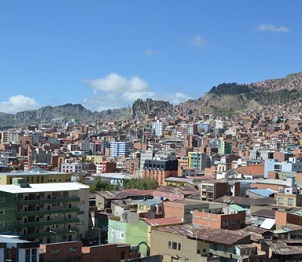 Rosatom has recently participated through one of its subsidiaries specializing in lithium [Tenex] in the International Seminar and Invitation for the Direct Lithium Extraction Technology Project organized by the national government. This is a good example of how our countries become closer in different matters.
Rosatom has recently participated through one of its subsidiaries specializing in lithium [Tenex] in the International Seminar and Invitation for the Direct Lithium Extraction Technology Project organized by the national government. This is a good example of how our countries become closer in different matters.
In the nuclear area, I believe there are still many other aspects we can work on further together.
We are also developing cooperation in food exports and related aspects. For example, we exported meat and other food products to Russia in 2019. I believe there is room to increase exports, whether of meat or exotic fruits, making use of nuclear technology as this is what we can do.
Ultimately, I see there is much room in other areas to develop and strengthen our bilateral relationship.
You are one of a few women who have held a senior position in a high-tech sector, such as nuclear, for many years. What do you think about the influence of this area of activity on the role of women in science and technology?
The nuclear sector and the policy of incorporating nuclear technology into the national economy allows Bolivia to enter a new stage of the scientific and technological development by educating people in physics, chemistry and several engineering areas, careers in which used to be predominantly male, at least in Latin America and also in Bolivia. But now there is a significant number of women who have chosen these careers.
I find it important to give women a chance to begin with education. It may seem insignificant but we are working, together with Rosatom, on a children’s book that showcases the benefits of the Center for Nuclear Technology Research and Development. The main character of this story is a girl, a female.
Such things as equal opportunities have to be implanted in both girls and boys from an early age. We should help them with the understanding of nuclear technology and, at the same time, leave the doors open for them. Girls should not think they cannot, for example, fix a bicycle because boys have to do it. We should open up opportunities for girls so that they also think about studying careers, which up until now have been set apart for boys only.
I would like to highlight that, for instance, women hold 44% of approximately 117 scholarships awarded by ABEN. This is important because we provide opportunities, showing that women have a lot of potential, our female scientists are highly qualified physicists, chemists and engineers, and that they have leadership qualities. I do not know if it is a mere chance, but at least 60% to 70% of managerial positions in ABEN are held by women.
Taking into account that this is a very important project in terms of science and technology and it has no more than 5 years in the making, I believe that our responsibility in the development of human resources is to create certain mechanisms, certain tools of supporting and encouraging young women to take up studying in such areas as mathematics, physics, biology and engineering and give them a chance to pursue careers in these fields.
Part of ABEN’s work is to introduce nuclear topics in the standard school curriculum, and curricular activities we propose include gender aspects as well.
The fact we have several agreements with different universities in the country also gives us the possibility of, and responsibility for, including these gender matters in our work with universities.
I am sure this is an extremely important responsibility for us.
As Executive Director of ABEN, I can say I have great confidence and certainty; I feel reassured that things are being done right.
The fact we have a technological partner like Rosatom and Russia has more than 75 years’ expertise in the nuclear field and is one of a few countries that uses nuclear technology across its value chain gives us confidence and reliance that we are with the best.
I am absolutely sure that the bilateral project between Bolivia and Russia is of the highest significance.




